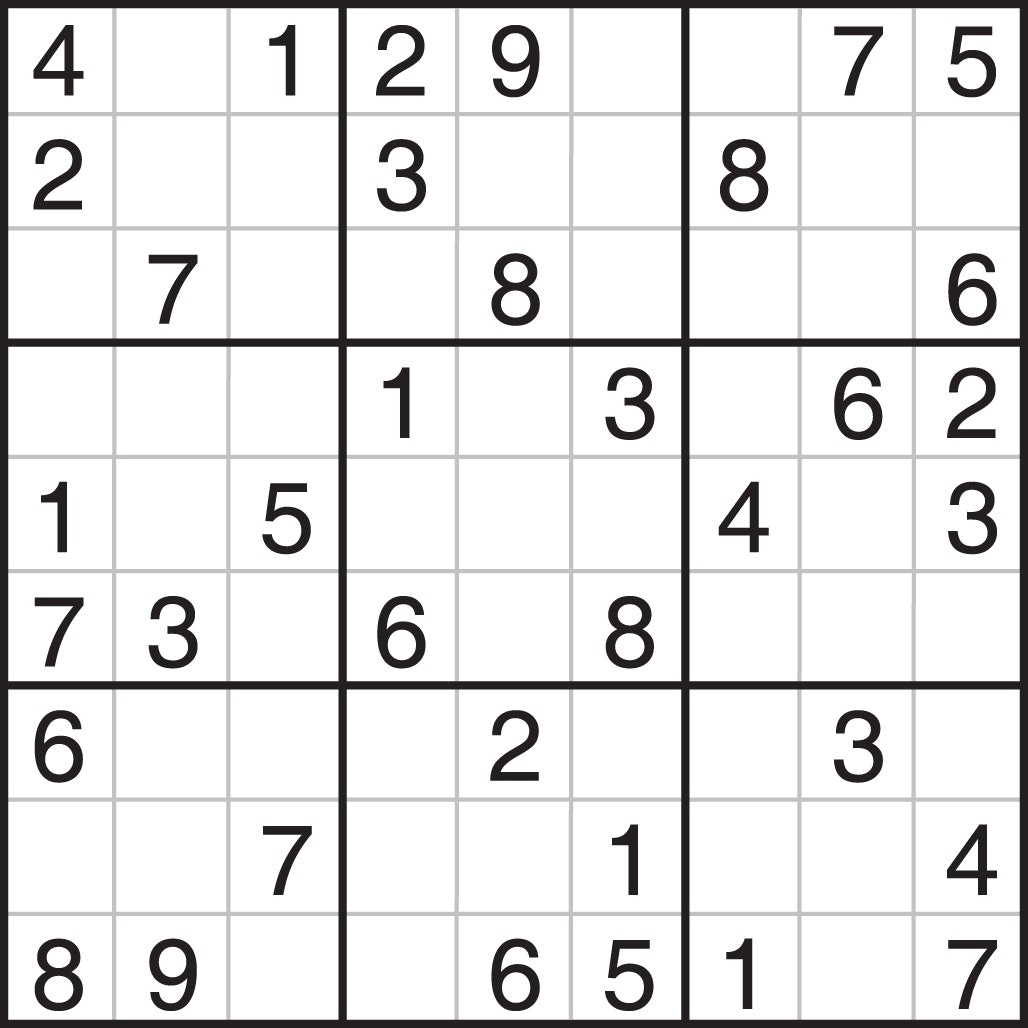

There you have done it! You learned two new Sudoku hints that will help you solve two missing cells in a row or column. If cell (R5,C8) is a 3, cell (R5,C2) must be a 4. Since you cannot have two 4s in the same region, cell (R5,C8) must be a 3. If you look at the right – center region carefully, you will see that there is a 4 in cell (R6,C7). This time you don’t have a 3 or a 4 in column 2 or column 7 to help you solve the two empty cells in row 5. Counting from 1 to 9 you will find that a 3 and a 4 are missing. Again you have two empty cells circled in red. Therefore the other empty cell (R2,C1) must be a 4. Since there can only be one 4 in row 8, the cell (R8,C1) must be a 2. You will notice that there is a 4 in (R8,C5). But where do they go? To solve this column, look at row 8. They are circled in red.Ĭounting from 1 to 9 you find that a 2 and a 4 are missing. You will notice that in column 1 we are missing two numbers. Here are two Sudoku hints that will help you solve a row or column where two cells are empty. Hints To Solve Solve Sudoku With Two Cells Missing. This is just another way to find a cell’s solution using a little logic. Upon closer scrutiny, you will see that cell (R2,C5) is the only place a 7 can go in row 2 even though there are other empty cells in that row.

After all each region has two places a 7 can go. This is a classic example.Īt first glance, one might think that it isn’t possible to place a 7 in the top three regions. Sometimes you will encounter the situation where there is only one place a number can possibly go. The existing sevens prevent the number 7 from being in any other empty cells except for the ones circled in red. In the example at the left, I have identified the only possible positions for the number 7.

Sudoku Hints For Slightly Harder Puzzles Look for the only possible choice. Repeat again and again until you can no longer find a solution for any cell. It is essential to learn this technique because every Sudoku puzzle requires its use.Īfter you have solved (if possible) for the number(s) that had the most “givens”, cycle through all the numbers 1 through 9, solving for each number as many as you can using the scanning method. Since we know that every row, column, and region can only have one instance of each number, you can logically use the scanning method I illustrated in my article “How To Play Sudoku” to find other cells that contain the same number. I like to start by first looking for a number that has the most “givens”. It is better to have a systematic approach to solving Sudoku. Most people I suspect just pick a spot at random to start. What is the missing number in the graphic at the left? Where do you start? The missing number is the solution for that empty cell. Is there a row, column, or region that has one cell unsolved? If there is you can quickly find the solution.Ĭount from 1 to 9 locating each number in that row, column, or region. Sudoku Hints For Beginners Look for the obvious. Let’s skip the guessing and learn to solve Sudoku by reason and logic. This breaks the Sudoku rules rendering an unsolvable puzzle. Usually, you will end up with two identical numbers in a row, column, or region. You may get half way through a puzzle before you realize that a mistake was made somewhere. Guessing will most often lead you down the wrong road.


 0 kommentar(er)
0 kommentar(er)
